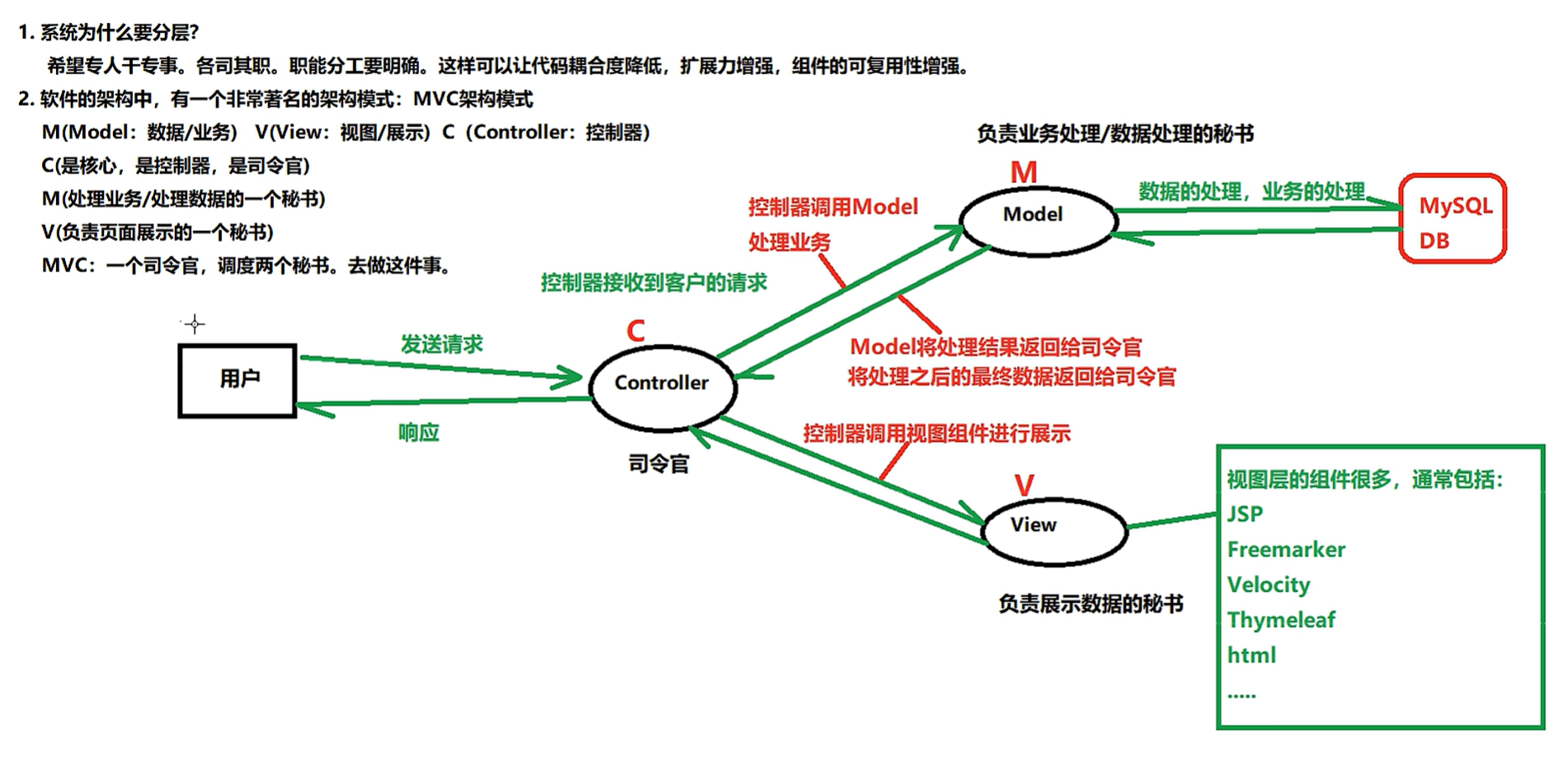JavaWeb05
一、Listener监听器
1、简介
Listener是Servlet规范中的一员
在Servlet中,所有的监听器接口都是以Listener结尾
监听器实际上是Servlet规范留给JavaWeb程序员的一些特殊时机
当在某些时机需要执行一段Java代码时,可以用对应的监听器
2、常用的监听器接口
(1)jakarta.servlet 包下:
ServletContextListener、ServletContextAttributeListener
ServletRequestListener、ServletRequestAttributeListener
(2)jakarta.servlet.http 包下:
HttpSessionListener
HttpSessionAttributeListener、HttpSessionBindingListener
HttpSessionIdListener、HttpSessionActivationListener
3、实现一个监听器的步骤
(1)以ServletContextListener为例
编写一个类实现ServletContextListener接口
这个监听器监听的是ServletContext对象的创建和销毁
监听器中的方法不需要程序员调用,在特定事件发生时由服务器调用
@WebListener
public class MyServletContextListener implements ServletContextListener {@overridepublic void contextInitialized(ServletContextEvent sce) {// 这个方法在ServletContext对象被创建时调用 }@overridepublic void contextDestroyed(ServletContextEvent sce) {// 这个方法在ServletContext对象被销毁时调用 }
}(2)在web.xml文件中配置这个监听器
也可以使用 @WebListener 注解
<listener><listener-class>自己实现的监听器类的全类名</listener-class>
</listener>4、其他监听器
(1)XxxxAttributeListener
监听的是某个域中的attribute被增加、修改、删除
只要域中的数据发生变化,就执行相应的方法
(2)XxxxBindingListener
例如,一个JavaBean实体类实现了HttpSessionBindingListener接口
那么当这个实体类的对象被放入session的attribute中触发bind事件,移除触发unbind事件
这个实体类不需要使用 @WebListener注解
(3)HttpSessionIdListener
监听Session对象的Id,当Id改变时调用类中的唯一的方法
(4)HttpSessionActivationListener
监听Session对象的钝化和活化
钝化:session对象从内存中存储到硬盘文件
活化:session对象从硬盘文件中恢复到内存
二、MVC架构模式
1、简介以及示意图

2、JDBC工具类的封装
public class DBUtil {private static ResourceBundle bundle = ResourceBundle.getBundle("resources/jdbc");private static String driver = bundle.getString("driver");private static String url = bundle.getString("url");private static String user = bundle.getString("user");private static String password = bundle.getString("password");// 工具类的所有方法都是静态的// 将构造方法私有化,防止创建对象private DBUtil() {}static {try {Class.forName(driver); } catch (ClassNotFoundException e) {e.printStackTrace(); }}private static ThreadLocal<Connection> local = new ThreadLocal<>();// 没有使用数据库连接池,直接创建连接对象public static Connection getConnection() throws SQLException {Connection conn = local.get();if (conn == null) {conn = DriverManager.getConnection(url, user, password); local.set(conn);}return conn;}public static void close(Connection conn, Statement stmt, ResultSet rs) {if (conn != null) {try {conn.close(); local.remove(); } catch (SQLException e) {throw new RuntimeException(e); }}if (stmt != null) {try {stmt.close(); } catch (SQLException e) {throw new RuntimeException(e); }}if (rs != null) {try {rs.close(); } catch (SQLException e) {throw new RuntimeException(e); }} }}3、MVC架构模式与三层架构的关系
三层架构:表现层、业务逻辑层、持久化层
表现层对应V和C
M包括了业务逻辑层和持久化层
